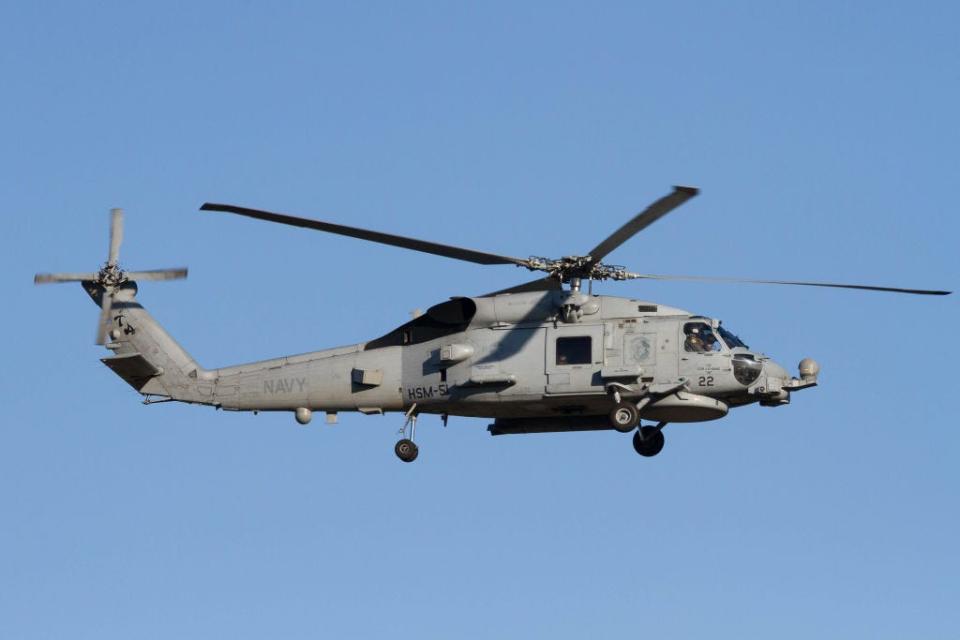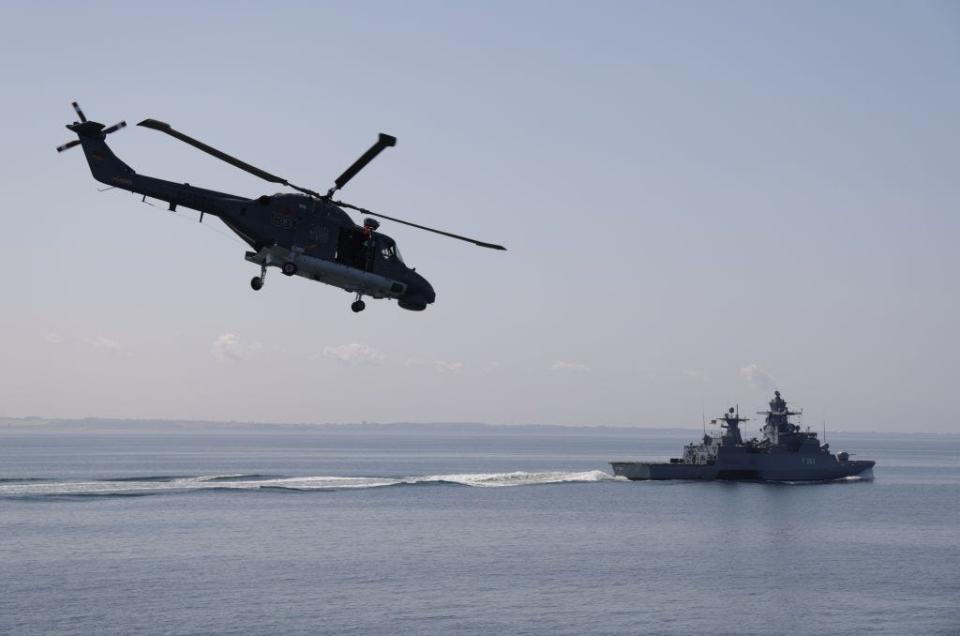NATO helicopters are shooting down and eliminating enemy drones in a rarer kind of Red Sea battle
Houthi attack drones have mostly been intercepted by US and allied warships in the Red Sea.
Air-to-air combat has been much less common, but last month, a French helicopter shot down a drone.
A former US naval aviator said the engagement is not necessarily surprising.
The Houthis have launched a lot of deadly threats into the Red Sea, many of which have been shot down by US and allied warships operating in the region's dangerous waters.
One recent interception, however, was credited to a French helicopter crew, which blasted a Houthi attack drone out of the sky in air-to-air combat. Helicopter-versus-drone fights aren't the norm in this conflict.
Victories like these can be more difficult to achieve, given that they require hitting a moving target from another moving target in the air, but they aren't all that surprising because helicopters are capable assets and the crews likely would have trained for such scenarios in advance, a former US naval aviator told Business Insider.
Helicopters are 'pretty good' on defense
On March 20, a French frigate detected a Houthi drone while the ship was protecting a merchant vessel in the southern Red Sea as part of the European Union's security mission Operation Aspides.
A helicopter embarked onboard the warship was then deployed to locate the drone, which was deemed a threat, and destroy it. France didn't say exactly how the aircraft engaged the drone, but it was effectively eliminated.
"These actions directly contribute to maritime security," the French defense ministry said of the incident in an update on its operations around the world.

France also did not say what type of helicopter engaged the Houthi drone, but both of the French warships that have been in the Red Sea both carry NH90 aircraft, which can be equipped with air-to-surface missiles and machine guns. Because the drone was traveling in the air, the crew likely used the guns to take it down.
Nearly all of the drones and missiles launched by the Houthis since November, when the Iran-backed rebels began consistently attacking international shipping lanes off the coast of Yemen, have been shot down by US Navy warships or fighter jets, or coalition vessels like those party to Operation Aspides.
Helicopter engagements are rarer occurrences, and have only happened a handful of times. But Brynn Tannehill, who flew the SH-60 Seahawk, a multi-mission helicoptered used by the Navy that's based on the UH-60 Black Hawk, said France's success "is not particularly surprising."
"Helicopters can provide a relatively stable platform — they're relatively maneuverable," Tannehill, now a US Army Black Hawk aviator and a defense analyst, said. "The biggest thing against them is that they're slow, so against a faster target, they're going to be useless."
After the Sept. 11, 2001 terror attacks, while in the Navy, Tannehill said she practiced simulated intercepts of small aircraft — something that would move at a speed similar to that of a one-way attack drone — and boats that a bad actor could theoretically pack with explosives.

The goal was to essentially figure out whether a SH-6o could maneuver into position, put a gunner in the door, and eliminate such threats with a .50 caliber machine gun, she said. The simulations demonstrated that helicopters were, indeed, very effective.
"What they found was that helicopters are pretty good at shooting down non-maneuvering, slow targets out the door," Tannehill said. "And because you're shooting sideways out of them, the debris doesn't even come back at you."
These training simulations have ultimately been brought to life during the ongoing conflict between the Houthis and the US and its allies.
On December 31, four Houthi small boats attacked a container ship, prompting its crew to issue a distress call. Helicopters from the USS Dwight D. Eisenhower and USS Gravely — an American aircraft carrier and a destroyer, respectfully, that are deployed to the region — responded to the call.
When the responding Navy helicopters arrived on the scene, the Houthis opened fired on the American aircraft, which then returned fire in self-defense, sinking three of the four Houthi small boats and killing everyone on board, US Central Command said in a statement at the time. The fourth boat managed to flee the area.
Pilots are 'well-trained'
And the US hasn't been the only naval force to destroy Houthi threats in the Red Sea with embarked helicopters. A day after the French engagement, on March 21, a helicopter attached to the German frigate Hessen destroyed a Houthi surface drone that was identified as a threat to civilian ships.

A spokesman for the German Bundeswehr Joint Forces Operations Command told BI that the aircraft involved was a Sea Lynx, which is armed with torpedoes and a machine gun. It was not clear how, exactly, the helicopter engaged the surface drone, but guns are likely.
Tannehill said that these kinds of engagements require a considerable amount of training and knowledge of both the aircraft and its weapons systems, and also coordination with other allied ships operating in the area.
"You've got to be competent with your systems, you've got to be quick with them, you've got to be knowledgeable about them," she said. "The pilot's got to be good at communicating with the rest of the crew and making sure that you're setting up for shot after shot after shot."
There are limitations, however, as for how fast the helicopter can travel, when the doors can open, and when the gunners can open fire. The pilots also have to make sure they're operating at a safe distance such that a drone that gets hit and explodes doesn't send shrapnel flying into the aircraft.
"The pilots are well-trained," Tannehill said, adding: "This is something that you probably would've practiced with the task force beforehand to make sure that when it does happen, that everybody knows what they're supposed to do and gets it done — including permission to fire in an amount of time that allows you to do it before the target presents a real threat to somebody. "
Read the original article on Business Insider

 Yahoo News
Yahoo News 
